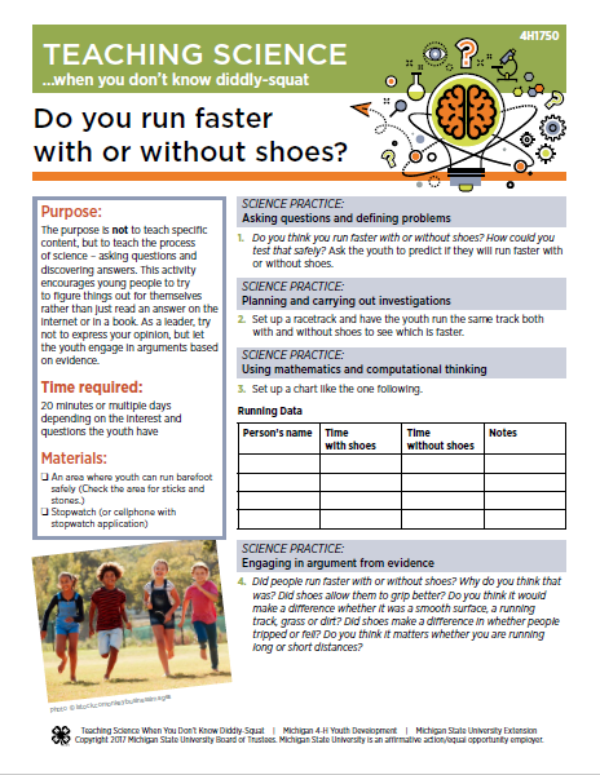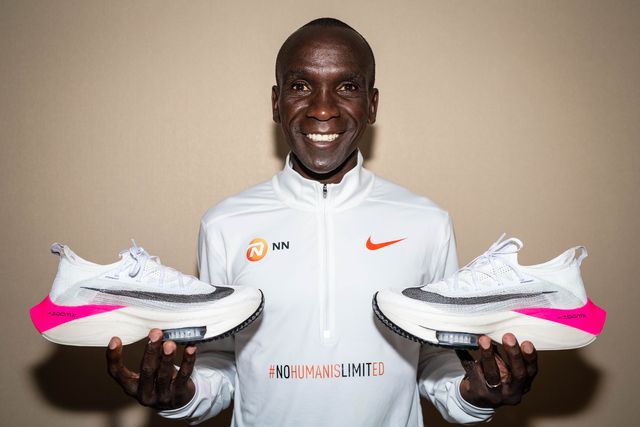Can You Run Fast Without Shoes?
Yes, it is possible to run fast without shoes. In fact, barefoot running has gained popularity due to its potential benefits for foot strength and running form.
Many people believe that running without shoes allows for a more natural and efficient gait, potentially reducing the risk of certain injuries. Some studies suggest that barefoot running may improve proprioception and stability. However, it is important to note that transitioning to barefoot running should be done gradually, as it can put additional stress on the feet and lower limbs.
It is also crucial to consider the running surface and potential hazards when running without shoes. Ultimately, whether or not to run barefoot is a personal choice that depends on individual preferences and goals.

Credit: www.canr.msu.edu
Benefits Of Barefoot Running
Barefoot running has become increasingly popular among runners due to its numerous benefits. One of the key advantages is improved running form. When running without shoes, the body naturally adjusts to a more efficient stride, reducing the risk of injury and enhancing overall performance. The absence of cushioning and support from shoes forces the runner to land on the forefoot or midfoot, promoting a more natural foot strike pattern. This leads to a smoother, more fluid running motion.
In addition to improved running form, barefoot running also provides enhanced sensory feedback. Without the barrier of shoes, the feet can fully engage with the ground, allowing the runner to better feel variations in terrain and adjust their stride accordingly. This increased sensory input can help improve balance, stability, and proprioception.

Credit: www.pinterest.com
Risks Of Barefoot Running
Barefoot running, although gaining popularity, comes with certain risks. One of the main concerns is the increased susceptibility to injury due to lack of cushioning. Without the protection and shock absorption offered by shoes, the feet are more vulnerable to impact-related injuries such as stress fractures and plantar fasciitis. Additionally, running barefoot exposes the feet to vulnerability to sharp objects on the ground, increasing the risk of cuts, punctures, and infections. While barefoot running can improve foot and calf muscle strength, it is crucial to gradually build up to it to allow the body to adapt. Spreading sessions of barefoot running with regular shoe use can also help minimize the risk of injury. It is always advisable to consult with a healthcare professional before transitioning to barefoot running to ensure it is suitable for your specific foot structure and running goals.
Transitioning To Barefoot Running
Transitioning to barefoot running can be a gradual process that requires patience and proper training. It is essential to strengthen your feet and lower legs to prevent injuries. Incorporating strengthening exercises into your routine can improve your balance, stability, and overall running performance. Some effective exercises include toe curls, calf raises, and foot domes. These exercises target the muscles in your feet and lower legs, helping them adapt to the demands of barefoot running. It is important to start slowly and gradually increase the intensity and duration of your barefoot runs. By allowing your body to gradually adapt, you can minimize the risk of injuries common to beginners. Remember to listen to your body and give yourself time to adjust to this new running style. With proper training and conditioning, running without shoes can be a natural and enjoyable experience.
Choosing The Right Surface
Running without shoes can offer a sense of freedom and connection to the ground. Soft surfaces like grass or sand are gentler on joints and muscles. Harsh surfaces like concrete can lead to injuries. Extreme temperatures can cause discomfort and affect performance. Choose the right surface based on personal preference and comfort level.
Selecting Minimalist Footwear
When selecting minimalist footwear, consider features such as: weight, flexibility, and heel-to-toe drop. Make sure the shoes offer ample protection to avoid injuries. Transitioning to minimalist footwear? Start slow and gradually increase your mileage. Focus on improving running form and strengthening lower leg muscles to avoid overuse injuries.

Credit: www.nytimes.com
Tips For Injury Prevention
Running without shoes can improve strength and balance as it engages foot muscles. Wearing minimalist shoes is also beneficial for foot function. A well-designed warm-up routine can help prevent injuries during running. Listening to your body and adjusting your pace accordingly is crucial. Ensuring proper form and technique can reduce the risk of injuries. Regular strength training for lower body muscles contributes to injury prevention as well.
Frequently Asked Questions Of Can You Run Fast Without Shoes?
Does Running Without Shoes Make You Faster?
Running without shoes may potentially make you faster due to the increased strength and flexibility in your feet and lower legs. However, this may vary from person to person, and it’s important to gradually transition to barefoot running to avoid injuries and allow your body to adapt.
Is It Ok To Run With No Shoes?
Running with no shoes is generally safe on certain surfaces for short distances to strengthen feet and improve form. However, be cautious of potential hazards and gradually build up barefoot running to prevent injuries.
Do Shoes Affect Running Speed?
Yes, the type of shoes can affect running speed by providing support, cushioning, and traction. Proper running shoes can improve performance and reduce the risk of injuries. It’s essential to wear appropriate footwear that matches your running style and environment.
Conclusion
So, whether you prefer shoes or barefoot running, the choice is yours. Experiment and listen to your body to find what works best for you. Running without shoes can offer benefits like improved natural foot mechanics and enhanced sensory feedback.
Embrace the freedom and explore the joy of running au naturel.






